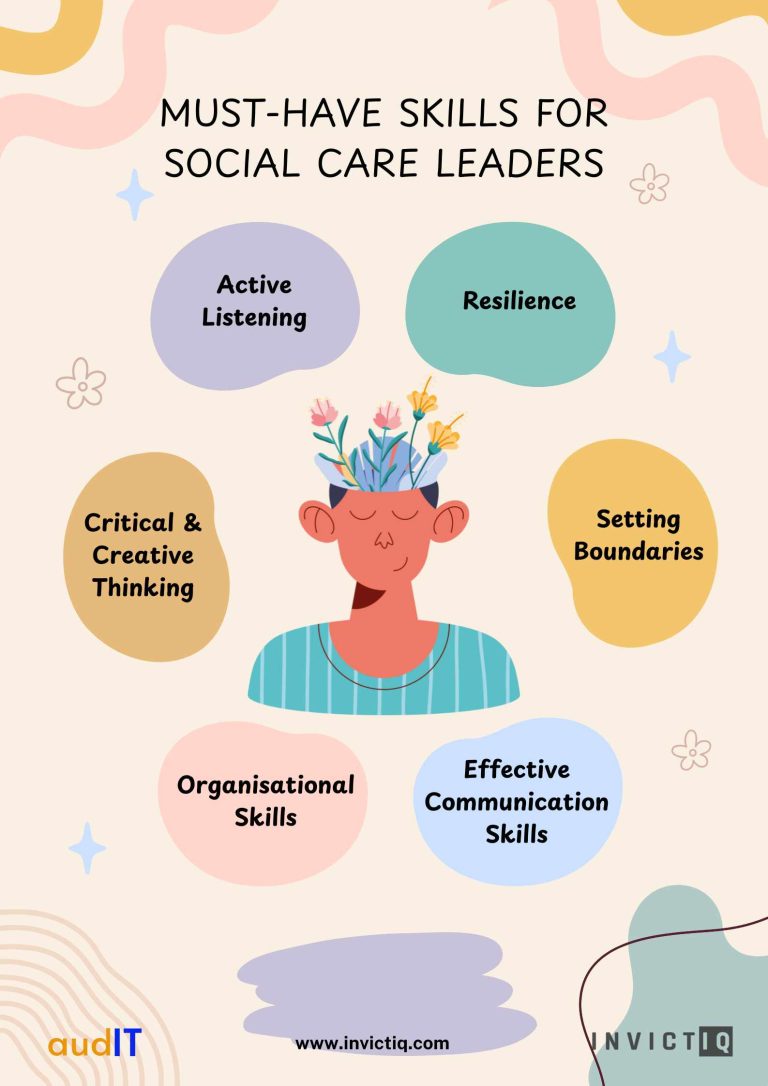@2021 invictIQ is a venture by Sprint Consultancy. All rights reserved. Privacy Policy.

A Day in the Life of a Care Compliance Lead
by Mark Topps
Care Compliance Leads are on the increase within the sector, across both care homes and home care services as we move to an era of feedback and enhanced quality of care. I was delighted to meet with Emma to understand her role and to put this blog together to provide insight into a day in the life of a Care Compliance Lead.
Starting the Day by Prioritising Quality and Safety
Emma spoke to me about how her typical day begins with reviewing the latest updates from her team, reviewing internal and external communication tools, looking at incident reports if there have been any, looking at medication errors and any safeguarding alerts. Emma spoke to me about how she is often the bridge between frontline care and the expectations of regulator and internal company policy and procedures to ensure nothing slips through the cracks. Emma explained some of her responsibilities which included:
- Visiting customers homes to observe care delivery, ensuring dignity, respect and person-centred approaches are upheld and that the care team are following the care plans.
- Auditing digital MAR sheets to ensure accuracy and to see if there are any trends that may indicate training needs or procedural gaps.
- Ensuring all staff are up to date with mandatory and developmental training.
- Investigating patterns and root causes to prevent recurrence, including sharing learning with the staff teams
- Monitoring compliance dashboards and analytics tools to track performance in real-time.
A Day in the Life: 7:00 AM – 2:00 PM Shift
I asked Emma to keep a diary of one of her shifts, so I could share the insight of this role:
- 07:00 – 08:00 – Emma started her day early with a scheduled observation of a care worker supporting a service user with dementia. She assesses how the care worker communicates, follows the care plan and maintains dignity and hygiene. Emma takes notes using a digital observation tool, flagging a few areas for feedback.
- 08:00 – 09:00 – Back in her car, Emma calls the care worker to provide immediate feedback, praising their rapport with the customer and offering tips on improving manual handling technique. She logs the observation in the compliance system. Emma made a point about how timely feedback and communication is essential in her role.
- 09:00 – 10:30 – Emma heads to the branch office to audit a week’s worth of MAR charts. She identifies two discrepancies in medication timing. She flags these for follow-up and schedules a refresher session for the staff member.
- 10:30 – 11:30 – Emma checks training compliance across the team. She notices that three staff members are coming up for safeguarding training. She emails reminders and updates the branch manager.
- 12:30 – 13:30 – Emma conducts a mini audit of infection control practices at the branch, checking PPE stock, hand hygiene posters and cleaning logs. She notes good compliance but recommends clearer signage in the office kitchen.
- 13:30 – 14:00 | Emma wraps up her shift by updating the compliance tracker, sending a summary to the Registered Manager and planning her next shift which she noted was an evening spot check. Emma reminded me that this is definitely not a 9-5 role and that she works on a flexible 7-day rota, covering early, late and weekend shifts to ensure compliance oversight is consistent and responsive to the needs of both staff and the customers.
Paper to Digital
Historically, compliance has always been paper based, however as we move into the digital era I spoke to Emma about how digital care has transformed the role. Emma spoke about how she was in Planner role prior to her current one so she knows no difference, but did talk about how digital systems allow real-time monitoring, easier to monitor remote staff and make changes a lot quicker. Emma spoke about how she spends more time in the field with her tablet than her predecessor did using paper (who had to come back, file items, print etc).
Emma spoke about how they use various digital tools (rota system, care planning system, communication platforms and an auditing system) and how they can be used to pull data to make informed decisions, how it has increased communication between the office and frontline staff, how auditing can be completed a lot more easily and used to identify gaps, spot trends and use the data to share with families and social workers.
My Thoughts
I may be biased as I have a Quality and Compliance Lead in my teams so see their benefit to the care team, but when I reflect to my days of homecare without these, how beneficial they could have been. As tools like Audit on Cloud by InvictIQ demonstrate, having a structured system to track audit progress, spot recurring issues, and learn from past data can make a tangible difference to quality and efficiency. I do believe as we continue to embrace digital systems and ways of working, this role will only grow in responsibility and importance, and as the sector moves to employing digital leads, I can see both complimenting each other to maximise the quality of the service.
MORE ARTICLES

Mark Topps is a social care leader who has worked in the care industry since 2004 and is currently working as a regional support manager. He regularly advocates, appearing on television, radio and podcasts and has started many campaigns for change in legislation and culture within the industry. Mark is the co-founder of The Caring View which is a social care podcast, YouTube show and free resource initiative for the sector. He also co-founded The Health and Social Care Club, which is an audio event hosted on LinkedIn. Mark is also the social media and marketing director at the National Association of Care and Support Workers.
Sign up for our newsletter

